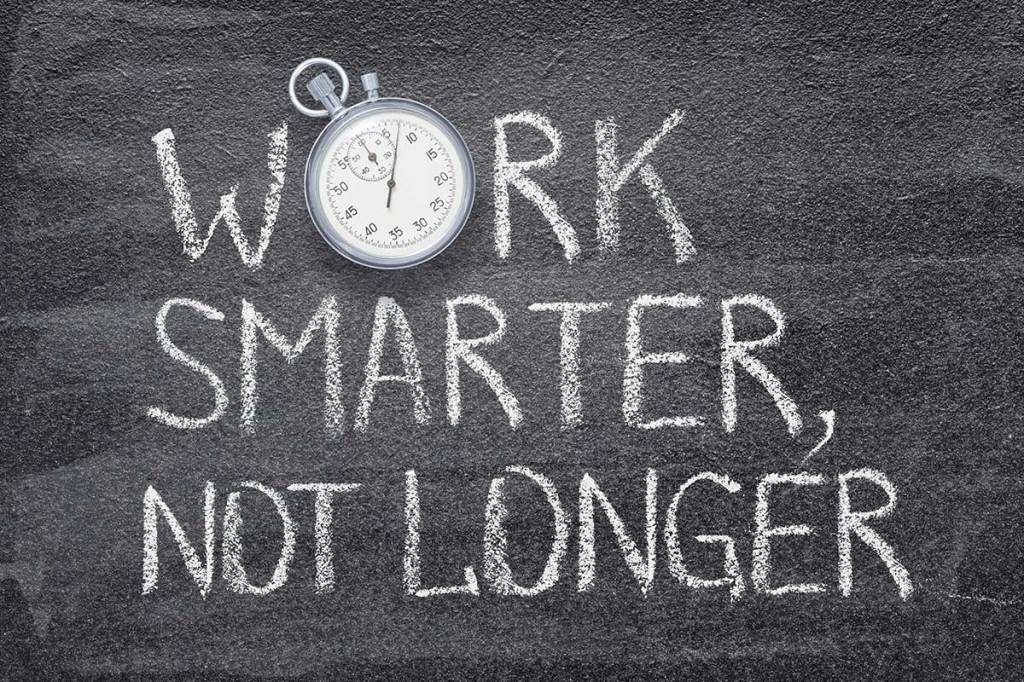Introducing the latest myCWT product and service enhancements
Building on our digital, omnichannel myCWT platform, our new products and services will simplify travel management for you and your employees – anytime, anywhere, anyhow.
Note: Featured services may not be available in your country at this time. Please reach out to your CWT representative for more details.
Hear from Chief Product Officer, Erica Antony as she shares the key product highlights of 2024, along with the key areas driving innovation.
-

2040: Baseline, Boom or Bust
As we enter an era of rapid transformation and unprecedented challenges, it is essential for travel managers, meeting & event planners, and corporate decision-makers to look ahead and frame our current strategic thinking with a clear vision of the future. Business travel and meetings and events (M&E) are poised for significant change over the next decade and a half, driven by a complex interplay of sustainability goals, technological advancements, evolving work models, and geopolitical dynamics.
In this paper to mark the 10th anniversary of our Global Business Travel Forecast, we explore, for the first time, a long-term vision of the future and potential trajectories through three distinct scenarios, each offering insights into how these forces should affect policy-making, budgeting and priorities. By examining these scenarios, we can better understand the diverse possibilities that lie ahead and the strategic imperatives required to thrive in each potential future.
Based on trajectory data analysis and interviews with industry leaders, behaviorists and climate tech founders, this forward-looking approach enables us to anticipate changes, strengthen our strategies, and make informed decisions that align long-term objectives. It is through this lens of foresight and adaptability that we can build resilience, seize opportunities, and navigate the complexities of the future.
We invite you to reflect on the insights presented, and consider how your organization can prepare for the opportunities and challenges that lie ahead. Together we can ensure that travel and meetings remain catalysts for growth, scalability and sustainable practices.
- Scenario development is both an art and a science
- Megatrends Shaping the Future of Business Travel, Meetings and Events
- Sustainability goals the new crux of corporate policy
- Technology Revolutionizes Travel Management
- Modern work models spark new travel patterns
- Changing demographics open doors to new opportunities
- Three Scenarios: Base case, boom and bust
- Future-proofing strategies

-

CWT GBTA Global business travel forecast 2025
When it comes to pricing, global business travel has finally reached an enduring, higher baseline. Prices will continue to rise in 2025, but only moderately, so expect a period of normalized growth.
However, this pricing environment, one of marginal gains and price regularity, is fragile. Global leisure travel has now realized a lot of its pent-up demand, while corporate travel has been resurgent, with 2024 edging at preCovid levels.
There are many factors at play, whether its volatile oil prices, labor costs and constraints, inflationary pressures, and geopolitical factors. As this elevated baseline edges upwards, albeit marginally, travel budgets will come under increased scrutiny, especially as travel patterns and attitudes change.
It’s why business travel can’t be viewed in a silo, and the true value to an organization must be fully realized. This forecast can help with those calculations.

-

Capitalize on emerging technologies in corporate travel
Technological advancements are accelerating at an unprecedented pace. How will emerging innovations like Generative AI, blockchain, and self-sovereign identity (SSI) transform corporate travel?
BTN and CWT probed global CEOs, travel managers, industry consultants and tech experts on the promises, questions, and expectations these innovations raise and how they are set to reshape traveler experience, cost control and service delivery in corporate travel and events.
Download and discover
- The technologies that will have the greatest impact on corporate travel in the next 2-5 years
- How these emerging technologies are poised to control costs, enhance service and security, and boost efficiency
- The critical challenges, opportunities, risks and roadblocks each innovation raises
- What travel managers, buyers and experts anticipate from these innovations

-

What’s in a word?
Almost every day I deal with a neologism, while sometimes I have to engage with a prelogism, and, occasionally, if I am especially lucky, I attend the birth of a protologism. What am I?
This isn’t actually a riddle, and I am not a doctor (well, I am a spin doctor, but that actually has nothing to do with it.)
I am a normal businessman, working in a world where the language I understand is constantly evolving in strange ways, with new words freshly created (protologisms), some of which catch the imagination and start to be used experimentally in meetings (prelogisms), or take flight and soar into our vocabularies to become everyday usage (neologisms).
This exotic evolution of the way we speak can sometimes grate on the eardrum – my own bête noire being ideate (which as it turns out dates back to the 17th Century, and so probably doesn’t really count). But increasingly, and more obviously in this world of video conferencing, people just accept a new word and feel no need to socialise it with their co-workers as words are spliced together to create a neologism.
Bleisure – the act of adding a couple of days‘ holiday onto a work trip, is a firm favourite in today’s travel lexicon. Staycation – to holiday in your own country – is growing in popularity, while woliday and workation – to take a working vacation – are not. Should they though? Are they a better use of a neologism?
Why do some new words stick like Velcro and others drop out of consciousness with the slipperiness of quicksilver (the liquid metal mercury that is, not the Marvel X-Men character)?
So the other day, I started researching some travel-related ones and found a few I like- and once we are allowed back on the road, I look forward to following their progress into our daily usage with one Roger Moore-style quizzically raised eyebrow:
- Brip – a short business journey
- Jetiquette – the accepted form of behaviour when flying
- Munky – someone who is addicted to meetings
- Solivagant – one who travels the world alone
- Sunbelievable – the sheer joy of being happy and relaxed in the sun
- Tripophobia – a fear of having no excursion to which you can look forward
- Voluntourism – taking time out from your job to work abroad for a charity
But we don’t have to create new words.
Sometimes other languages just capture the essence perfectly, and for me, there is a Swedish word which sums up a sensation I cannot wait to experience again once lockdowns are a thing of the past: resfeber – the restless race of a traveler’s heart before the journey begins.
Image credits: Adobe stock
-

The best of both worlds: how to organize impactful hybrid events
2021 is set to be a big year for hybrid meetings and events, with travel restrictions and various safety measures expected to remain in place. When done right, combining virtual and in-person elements allows you to boost engagement and reach a wider audience.
Get ahead of the curve by learning how you can organize impactful hybrid events that deliver results for your business.
Hear from our panel of experts on how to:
- Plan hybrid events now, while preparing for what may lie in the months ahead
- Excite and engage both in-person and virtual attendees
- Use technology to your advantage
- Mitigate risks associated with hybrid events
Host and Moderator:

Fredrik Hermelin – Senior Commercial Director, Nordics at CWT Meetings & Events
Hosted live: Wednesday, March 25, 2021 | 10.00am CDT Chicago | 15.00pm GMT London
Duration: 45 minutesPlease fill the form below to download the recording.
Watch on-demand
Please enter your details below to receive this recording
By completing the form below and signing up to receive the recording, you may also receive communications (email or phone) on our products and service. You can unsubscribe at any point in the future from our mailing list using the ‘unsubscribe’ link on any of our emails.
-

Podcast: The Best of Both Worlds: How to organize an impactful hybrid event
2021 is set to be a big year for hybrid meetings and events, with travel restrictions and safety measures expected to remain in place. When done right, combining the best of virtual and in-person events allows you to boost engagement and reach a wider audience.
Get ahead of the curve by learning from CWT Meetings & Events’ Fredrik Hermelin, as he speaks to industry experts about how to organize impactful hybrid events that deliver results for your business.
[buzzsprout episode=’8216541′ player=’true’]
-

Which ‘passion attack’ are you experiencing?
Passion is that special something that puts a light in your eye and a smile on your face. You know it’s a passion because you want to share it with others and find out as much as you can about it.
By its very nature, passion takes valuable energy – and when we spend our precious stores of that, it’s worth knowing where it’s going. Over the years I’ve found that my passions take one of three forms:
- Theoretical
In my early working life, it was easy to get caught up in the ‘passion of the day’ – if leaders I admired were reading a particular business author and claiming to find their books brilliant, I would unquestioningly find them compelling too – usually because I didn’t have another opinion or sufficient life experience to make a personal judgment call.
Within months, that was forgotten and replaced with the next popular idea. A clear indicator of a theoretical passion. - Transient
Some passions have the hallmarks of sincerity. Something grabs your attention and of your own volition, you are interested enough to research it to quite a level of detail because it makes sense or seems right and good for you at that time in your life.
Most of us reach a point in our lives where we feel we could be healthier, need to lose weight, or reduce our stress levels. Depending on who we know or what media we listen to, we might discover that meditation and plant-based eating are good for reducing stress and losing weight. We might go and do some very in-depth research and get cracking on a healthy diet and practice meditation. Indeed, we might even keep these up for some weeks or months.
For many people, these passions are transient – they are too difficult to sustain, or once they appear to have fulfilled their purpose we revert to our old habits. - Soul
The passion that takes hold for life and which, no matter what happens, endures a mainstay and permanent interest, is what I call a soul passion. For many people, their children are that passion. Some lucky people find a vocation in life – a job which they would do for little or no financial reward because it’s their true passion. They just can’t help doing what they set out to do.
So when I have an ‘attack of the passions’, I now examine it closely.
Often, it’s a theoretical passion fuelled by friends, the media, or a short-term need. But whatever form it takes, I have learned to use the energy wisely and direct it into something long-term and worthwhile.
Image credits: Adobe Stock
- Theoretical
-

Virtual & Hybrid Events: What’s the secret to wowing the crowd?
Travel restrictions have led to a boom in virtual and hybrid events, and by all accounts, they’re here to stay. Sure, nothing beats face-to-face, but online events can succeed just as well, providing event professionals are resourceful and creative in their execution.
We asked our 216,000 global LinkedIn followers what event planners should do to keep screen-weary attendees actively engaged. Around a third (33%) of respondents would like to see more interaction with the audience. Another 25% want to see more relevant content and 24% find that events go on for longer than they need to.
It may come as no surprise that the most challenging aspect of a virtual event is keeping people’s attention. How do you get your audience to go from ‘casual observer’ to ‘active participant’? And why is it so hard?
According to Professor Jeremy Bailenson of Stanford Virtual Human Interaction Lab people need to work a lot harder to send and receive signals on virtual platforms. In regular face-to-face interaction, nonverbal communication comes naturally. We make and interpret nonverbal cues subconsciously. But being in an online environment involves more thought, “You have to make sure that your head is framed within the center of the video. If you want to show someone that you are agreeing with them, you have to do an exaggerated nod or put your thumbs up. That adds cognitive load as you’re using mental calories in order to communicate,” says Bailenson.
It pays to go the extra mile to engage your audience. There are a host of tips and tactics out there to help, from live polling to gamification widgets. The secret is standing out from the crowd.
One company lets you hire a rescued farm animal to join your meeting link. Attendees can ask the animal questions, learn about the sanctuary and ask for a tour of the farm. We’ve all attended a meeting in which the presenter was less engaging than a goat. If a real-life one gets people’s attention, perhaps it’s not a baaa’d idea?
Image credits: Adobe Stock
-

Why accentuating the ‘E’ in B2B4E is more important than ever
The terms B2B (business to business) and B2C (business to consumer) are commonly used to talk about how a product or solution is brought to market. Having spent my career in B2B, I was intrigued – and a bit skeptical – by CWT’s B2B4E concept. I wrongly assumed it was merely a marketing tagline.
But I see that the ‘E’ matters, greatly. It brings the necessary balance to serving the unique needs of businesses as well as those of their workforce. The ‘E’ represents employee expectation for consumer-grade experiences, simplicity in getting the job done, and doing what is best for the business. In other words, it is a requirement for employee-grade experiences.
If we’ve learned anything in the Covid-era, it is that employee needs go well beyond the office to include health, safety, and overall wellbeing. And for businesses, this translates to increased concern for productivity, engagement and welfare, and how these elements influence the bottom line.
In business travel, these interests are even more pertinent. In order to address these needs, a B2B4E travel platform must do five things:
- Be employee-grade – Traveling employees need to focus on their business, not their itinerary. A travel platform must recognize individuals and personalize their planning and journey with “know me” experiences based on trends, patterns, and preferences.
- Support a clear “why” – Travel is increasingly purposeful and aligned to values. Social responsibility, sustainability, and risk management are just a few of the higher-order objectives that must be considered and reflected in a travel platform and program.
- Put wellbeing first – Health, comfort, and safety will determine employees’ willingness to travel, and company endorsement of it, more than ever before. From pre-trip approval and accommodation to mobility preferences and traveler communication, a B2B4E platform must enable a more human approach to travel management.
- Assure global reliability – Enterprise businesses operate around the clock and around the globe. Their travel platform must follow suit, providing robust security, seamless systems and process integration, and 24×7 global servicing. For example, when work-from-home directives were issued across the globe, this time last year, CWT responded by setting up 24/7 in-app messaging and a one-click cancellation button to help travelers get home.
- Guide on best practice – Especially in travel, there is benefit in taking the well-beaten path. Learning from thousands of businesses and millions of travelers, a travel platform must translate capabilities used by travelers like me into a prescribed or essential approach with configurability for unique needs.
Many long-standing business travel capabilities are becoming table stakes. Content, booking, rates and reporting are some examples of expected core capability and strength for any business travel solution. Whereas next-generation battlegrounds like employee welfare and business responsibility – topics meaningful to individuals and businesses alike – bring a new focus to the shared interests of companies and their employees.
This is what B2B4E is about. The outcome of serving both business and employee needs simultaneously is a more values-oriented view of success. It combines a traditional financial return-on-investment with a shared measure of value for investment.
In short, B2B4E is all about the E.
Image credits: Adobe Stock
- Be employee-grade – Traveling employees need to focus on their business, not their itinerary. A travel platform must recognize individuals and personalize their planning and journey with “know me” experiences based on trends, patterns, and preferences.
-

Data with destiny: 2021 hotel sourcing can be a gamble unless you put your chips on analytics
The rapid rollout of vaccines in key markets could unleash demand for business travel this year. Nevertheless, hotel rates are expected to fluctuate like a lottery machine and some of the effects of a yearlong strain on the resources of hoteliers and corporates alike, are only being felt now. With uncertainty ahead, it’s no wonder that hotel sourcing can feel like a game of roulette.
Before the pandemic, we helped our clients review and renew their hotel sourcing rates to secure the best deals like clockwork. Each year, our buyers worked on negotiating hotel room prices for clients for the year. Purchasing power was strong then and rooms were expected to be booked through the year at any given property. Demand was so high that negotiated rates increased anywhere by 1-3% every year.
And then came the pandemic, right after 2020 hotel programs had been negotiated at the end of 2019. Demand plummeted and the 1 – 3 % annual rate increase disappeared. Hotels dropped their rates and tried to get clients to lock in rates for 2021 by offering the same rates they had in place for 2019. Many proposed a combination of fixed and dynamic rates.
The pandemic saw our clients play their cards in two ways. 50% opted for a dual-rate strategy which meant extending their existing, negotiated fixed rates for an additional year, and combining with an additional dynamic discount taking effect when best available rates (BAR) or public rates come in lower.
The other half chose to negotiate as they had in the past and undergo a formal RFP process to capitalize on lower fixed rates. Renegotiating is typically the most obvious way of saving money, creating a lower baseline from which to renegotiate in future, an approach that RoomIt champions.
However, due to a combination of resourcing challenges, time constraints, and in some cases, loyalty and empathy for hotel partners facing an extraordinarily tough time, the dual-rate strategy was a surprising option for half of our clients in 2021.
The question is, will this ‘dual-rate strategy’ pay off, and is it a smart bet? Assuring client safety, saving money, and ensuring a seamless hotel strategy is RoomIt’s raison d’être, so to understand whether the ‘dual-rate strategy’ pays off against each of these three principles, think of data as your cardsharp in the great gamble of 2021 hotel sourcing.
With more access to data, technology, and multiple rate types, today’s sourcing approach shouldn’t start with a proposal and end with rate loading.
Instead, travel buyers have an opportunity to take a dynamic approach to manage a dynamic environment, using advances in technology, data, visualization tools, and predictive analytics to take a category management approach to sourcing and relationships all year.
CWT has in place proprietary analytics, auditing, and reporting tools that not only help clients measure and validate the return of their 2020 ‘dual rate’ savings vs. renegotiated rates, but analyzes data from all bookings made through CWT to drive satisfaction and safety, ensuring the right mix for each individual client and their hotel sourcing objectives.
Our tools and reporting extract, audit, and monitor rich data on a continuous basis to maximize traveler experience and influence choice.
Certainly, analytics will be the mainstay for hotel sourcing strategies throughout the resumption of travel and beyond, determining what approach and rates clients should stick or stay with.
Consolidating and analyzing multiple data sources coupled with the expertise and industry knowledge of your TMC will help you place bets in your favor during the most unpredictable year in hospitality, in recent history.
Image credits: Adobe Stock
-

Integrity in all things great and small
In the wise words of Albert Einstein, “whoever is careless with the truth in small matters cannot be trusted in important affairs.” Being truthful is a cornerstone to integrity, but the trait is more than this – it’s doing the right thing consistently, dealing fairly and ethically across the board, taking responsibility, and being accountable for how we act and what we say.
We aren’t born with innate integrity, it’s a behavioral muscle we can develop and strengthen. Making the right decision and doing the right thing won’t always mean taking the simplest route, it won’t always be easy and can have consequences. We all have flaws and it can be easy to rationalize bad behavior or the odd mistruth. Doing what is right in all circumstances takes courage and it’s continuous work, but it’s worth it. In business, integrity can solidify relationships with colleagues, clients, and suppliers. They can rely on you to keep your promise and stand up when things go wrong. They can trust you.
Here’s my take on living our day-to-day lives with integrity: Be consistent in your decision-making and treat everyone the same, whatever the circumstances. Give credit to those who deserve it, don’t take it yourself when it should go to someone else. Don’t take advantage of others. Listen and take advice from other people. Own your actions and accept when you’re wrong. Try to see the good in people. Keep your word and deliver what you’ve promised. Be open and transparent and, of course, tell the truth.
And to Einstein’s point, if we can’t show integrity in the small things in life, what does that mean for the larger issues we deal with, when the stakes are higher? Bending the rules once may bring us a benefit in the short run, but will your colleagues or friends trust you the next time around? It can take years to build up a reputation for integrity but can be very quickly lost. We can’t pick and choose when we show integrity – we have it or we don’t.
Image credits: Adobe Stock
-

Reflections on displaying kindness and concern for others
CARING: 关心 guānxīn / 关爱 guānài
A word with a kaleidoscope of meaning to different individuals, in different situations.
We have so many words that encapsulate the essence of caring including empathy, active listening, and being present.
In my world, I return to the genesis of this word in Chinese, it means – “concerning the heart”, and “concerning love”.
Reflecting on how this translates in my everyday life (both at home and at work), even in the darkest, most disappointing, and most challenging of days, it means:
DOING, with your heart,
GIVING, with your heart,
And most importantly,
LISTENING, with your heart.
As we wade through the waves of prolonged isolation from loved ones, from the office, from the human connection that we as social creatures crave and live for in a community, listening, has never been more important.
In a virtual world, this concept is my bridge across the abyss of physical social interaction to help, to support, and to try and help find fulfillment in everyday life; with the colleague living in a tiny studio who has not seen another human for months during the full lockdown; the friend who has been trapped in his work home for the last year, unable to see his now 1-year-old child due to border closures, and every other person who continues to struggle and find meaning with each sunrise.
Caring, starts with listening. Listen, with your heart, as a human, to another human.
Image credits: Adobe Stock
-

Building emotional capital
As a matter of personal interest, I recently spoke with a number of senior men and women business leaders to understand the key traits of “successful” corporate women, based on their first-hand experience of working with such women. It was intriguing (though not surprising) that most of them converged on the high emotional quotient of these women leaders. At the risk of adding another 3C model to our terminology, the three attributes they highlighted include Compassion, Composure, and Conscientiousness.
The next question then is whether or not the corporate world places “enough” premium on these qualities. The response to this has been rather ambiguous, bordering on negative. Let’s recognize that the yardsticks used in the corporate world have been designed in the past by men and for men. And this is understandable considering the dominance of men in this space in the centuries gone by. However, it is high time we revisit these yardsticks to incorporate the women’s behaviors, to allow them to leverage their strengths and find their rightful place, thereby unleashing the economic value of gender parity. Various studies published in recent years have estimated the value of gender parity anywhere between $10-30 trillion to global GDP. That should be worth everyone’s while!
It will be a shame if another generation of women spends a lifetime emulating or acquiring the corporate desired behaviors from their male counterparts. If we all truly value gender diversity (beyond just the gender ratios at work), we need to acknowledge and value these women’s leadership styles on par with – not necessarily in lieu of- the behaviors of their male counterparts. This might well be a need of the hour, to prepare for the workforce of the future, in which machines will contribute significantly to intellectual capital. So let’s build emotional capital, with women leading from the front.
Image credits: Adobe Stock
-

20 inspirational quotes to help you choose to challenge
My grandmother always used to say that you could change someone’s day with just one kind word, and the concept of that power has remained with me at the heart of my life. It may even be inspiration behind my career in communications and my being a quodophile (someone who loves, collects and is inspired by quotes). And so, in keeping with the Choose To Challenge theme of this year’s International Women’s Day theme, I thought I would share twenty of my favorite quotes which do just that:
“Admitting something is wrong is always the first step towards fixing it.”
– Sylvia Earle
“If you don’t love what you do, you won’t do it with much conviction or passion.”
– Mia Hamm
“If you feel like there’s something out there that you’re supposed to be doing, if you have a passion for it, then stop wishing and just do it.”
– Wanda Sykes
“Only idiots refuse to change their minds.”
– Brigitte Bardot
“Passion is energy. Feel the power that comes from focusing on what excites you.”
– Oprah Winfrey
“Avoiding danger is no safer in the long run than outright exposure. The fearful are caught as often as the bold.”
– Helen Keller
“Do not stop thinking of life as an adventure. You have no security unless you can live bravely, excitingly, imaginatively, unless you can choose a challenge instead of a competence.”
– Eleanor Roosevelt
“Do what you feel in your heart to be right – for you’ll be criticized anyway.”
– Eleanor Roosevelt
“Good advice is always certain to be ignored, but that’s no reason not to give it.”
– Agatha Christie
“I love to see a young girl go out and grab the world by the lapels. Life’s a bitch. You’ve got to go out and kick ass.”
– Maya Angelou
“I never dreamed about success. I worked for it.”
– Estée Lauder
“If your actions create a legacy that inspires others to dream more, learn more, do more and become more, then, you are an excellent leader.”
– Dolly Parton
“It is never too late to be what you might have been.”
– Mary Ann Evans
“Leadership is about making others better as a result of your presence and making sure that impact lasts in your absence.”
– Sheryl Sandberg
“Memories are simply moments that refuse to be ordinary.”
– Diane Keaton
“Never be so busy as to not think of others.”
– Mother Teresa
“Success isn’t about how much money you make; it’s about the difference you make in people’s lives.”
– Michelle Obama
“The most ominous of fallacies – the belief that things can be kept static by inaction.”
– Freya Stark
“We can each define ambition and progress for ourselves. The goal is to work toward a world where expectations are not set by the stereotypes that hold us back, but by our personal passion, talents and interests.”
– Sheryl Sandberg
“When you’re paid to do a job, it’s better to give a few minutes more to it, than a few minutes less. That’s one of the differences between doing a job honestly and doing it dishonestly!”
– Enid BlytonImage credits: Adobe Stock
-

Time after Time: 3 ways to work smarter
Back in 2020, we ran a study exploring global business travelers’ habits and preferences. 21% of global travelers ranked ‘having the bed to myself’ and 23% ranked ‘not having to cook my own meals’ the aspects of business travel that they loved the most. Fast-forward a year and our recent survey polling 186,000 of CWT’s LinkedIn community found a whopping 58% have their passport at the ready and are eager to travel.
Is it any surprise that after a year of extraordinary circumstances, the idea of a hotel bed in an interesting foreign locale and a lovely restaurant meal sounds like a vision of utopia?
Meanwhile, some staff of companies in countries including the US, UK, and Canada are logging on an average of two hours longer. There’s a little while to go before life feels more balanced for millions around the world. In the meantime, take a look at these three hacks to make working from home easier.
1. Try the Pomodoro technique Not a tomato-based sauce, just a great productivity trick developed in the 80’s and tried and tested by many, this method is based on splitting your tasks up and assigning each of them a 25-minute time slot. Set yourself a timer and concentrate solely on one task. After 25 minutes is done, have a short break. This is a great way to split your tasks down into manageable chunks and eliminate distractions.
2. Manage your inbox Inbox zero may be too lofty an ambition in these strange times but it’s true that if you don’t control your inbox, it will control you. Prioritizing and flagging emails that require action, setting aside time blocks throughout the day for checking email, and creating templates for your go-to responses are a few ways to feel less overwhelmed.
Certain responses can save time such as “it would be easier to discuss this in person,” or “when can I expect an update please?” in place of “just checking in.”
3. Use the right tools So much time can be wasted typing up meeting minutes, capturing to-dos or researching for that first business trip after lockdown (shout-out to the ‘passport at the ready’ posse).
Instead of writing notes yourself, record them and use a transcription service. There are also great task capture tools such as bullet journaling, WebEx teams, Basecamp, and Evernote.
And if you’re planning your next business trip, check for up-to-date restrictions and requirements in one place using CWT Travel Essentials.
Image credits: Adobe Stock
